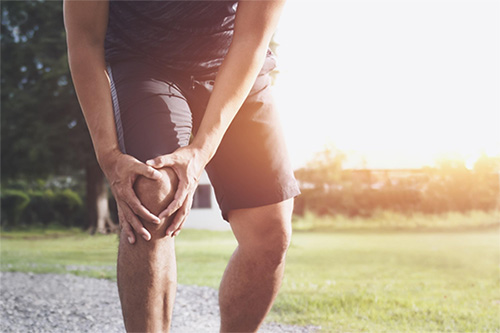
Commuters, travelers, backpackers, soon-to-be-mothers, parents to toddlers–anyone who has ever carried around an additional 10 to 35 pounds on a regular basis–know the relief that comes when that weight is set aside. Because the weight is temporary, the relief to our joints is immediate. When that extra weight is added on from stretches of unhealthy eating and a lack of exercise, the toll it takes on our joints is significant.
Osteoarthritis, the most common form of arthritis and the main cause of joint pain, is directly linked to obesity.1 The continued pressure caused by extra body weight wears on the joints and the protective cartilage at the end of your bones.2 Fat cells also produce chemicals in the body that promote joint inflammation, exacerbating the pain caused by strained joints.3 The more weight our body carries, the more force and stress our joints endure, which can cause irreparable damage on our knees and hips.
Knees:
Our knees bear 80% of our body weight when we stand still and 150% or more when merely walking across the room.2 That means, with every step, a 200 pound person exerts 300 pounds of pressure on the knees. The pressure is even greater when climbing stairs, walking up an incline, or squatting down.
Hips:
Our hips endure a force of 2.5 times our body weight when walking, 6 times our body weight when jogging, and 8 times our body weight when running.3
When we think of weight loss, many of us feel overwhelmed by the big lifestyle changes we think we’ll have to make in order to see results. Though change is necessary, small steps can be made that will render not only visible results, but lasting relief to the joints that keep us on the move.
At North Central Surgical Center, our mission is to treat each and every one of our patients and their families as if they were our own family member. Each patient, each family, each and every time.
2 https://www.webmd.com/pain-management/knee-pain/body-weight-knee-pain
3 https://hipandkneebook.com/tha-chapters/2017/3/1/basic-hip-n





